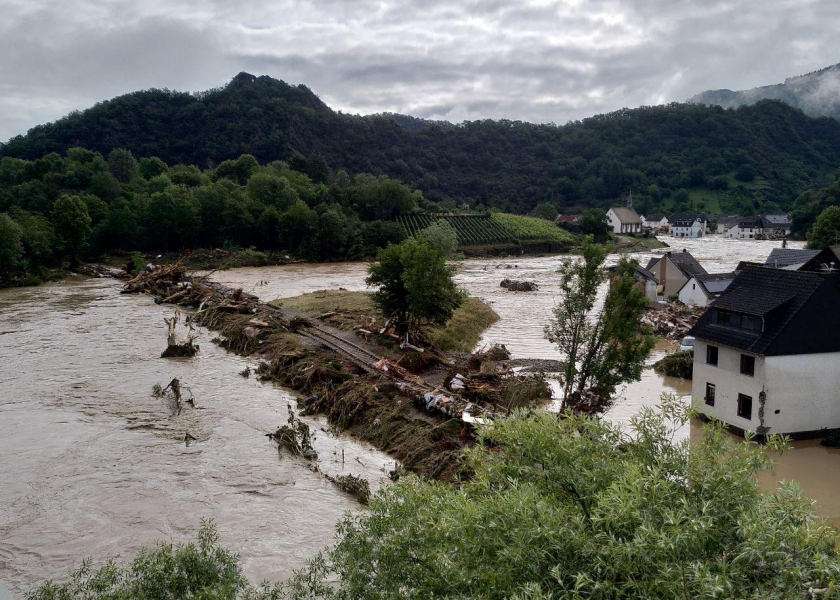Cities Boost Storms
December 5, 2022

When it comes to extreme weather, climate change usually gets all the attention. But according to a study from the Jackson School of Geosciences and two universities in China, the unique effects of cities — which can intensify storms and influence where rain falls — need to be accounted for as well.
“In addition to cutting emissions, we need to recognize that understanding the effects of urbanization is part of the solution,” said Dev Niyogi, a professor in the Department of Geological Sciences.
Niyogi is a co-author on a study published in Geophysical Research Letters that used computer models to investigate how cities and climate change influenced the rainstorm that struck the Rotterdam-Brussels-Cologne metropolitan region on July 14, 2021.
The model found that the interplay of large-scale climate and local-scale urbanization intensified the storm, causing more rainfall than either climate or urbanization on its own.
The severe weather system was part of a storm complex that dropped heavy rain across Western Europe during the summer of 2021, causing destructive and deadly flooding that killed at least 242 people, making it one of the deadliest floods in European history.
Researchers found that interplay between a warmer climate and city environment focused the rainstorm on suburban areas and boosted rainfall by 50% when compared with the influence of the city alone. That means that of the nearly 6 inches of rainfall that fell on the metropolitan region on July 14, about 3 inches of it can be attributed to these interactions.
To conduct the study, the scientists created a storm computer model that included the effects of the environment, city and climate. The model of the storm proved to be representative of the actual event. The storm centered over the same regions in eastern Belgium and western Germany and unfolded over the same timeline, with the simulation running July 13-17 and the most rain falling on July 14.
Although the influence of the climate and the city together had the greatest impact, lead author Long Yang, an associate professor at Nanjing University, said that when viewed individually, the influence of the city equals or outweighs that of climate change.
Back to the Newsletter